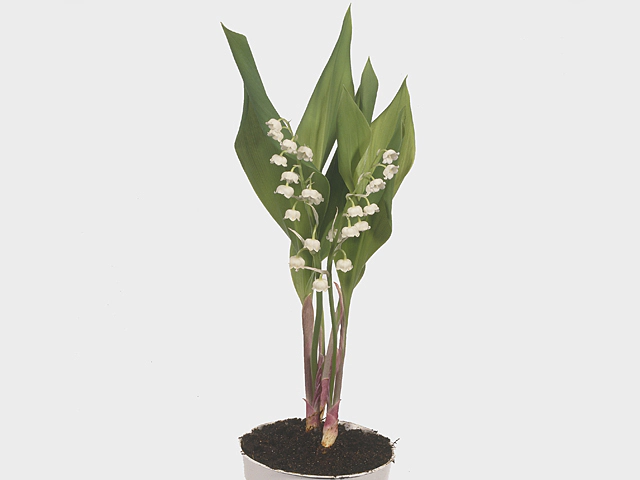Convallaria majalis

| Leaf tip | Pointed/acute |
| Fruit type | Berry |
| Leaf margin | Undulate |
| Flower scent | Normal |
| Leaf type | Foliage leaf |
| Winter hardness | Excellent (USDA-zone 1,2,3,4) |
| Flower color | White; White; White-white-999D |
| Leaf, general shape | Elongate |
| Plant height | 10 - 20 cm |
| Inflorescence | Raceme |
| Flowering month(s) | January; February; March; April; May |
| Structure (tissues) | Herbaceous |
| Light conditions | Semi-shades |
| Leaf division | Simple |
| Plant, growth type | Erect |
| Toxicity (if consumed) | Highly toxic |
| Moisture requirements | Moist |
| Soil type | Humus rich |
Convallaria majalis, commonly known as Lily-of-the-Valley, is a beautiful flowering plant that belongs to the genus Convallaria. It is popular for its sweet fragrance and delicate white blooms. This article will provide an overview of the key characteristics and requirements of the Lily-of-the-Valley plant.
The Lily-of-the-Valley plant has elongated foliage leaves with pointed or acute tips and undulate leaf margins. The leaves are simple, meaning they are not divided into smaller leaflets. The plant grows in an erect manner, reaching a height of 10 to 20 cm. The inflorescence of Lily-of-the-Valley is in the form of a raceme, where multiple flowers are arranged on a single stem.
One of the notable features of the Lily-of-the-Valley is its winter hardiness. It thrives well in regions with USDA zones 1, 2, 3, and 4, making it suitable for colder climates. The plant can survive harsh winter conditions, making it an excellent choice for gardeners looking for resilient plants.
The flowers of the Lily-of-the-Valley are small, white in color, and emit a normal floral scent. The scent adds to the plant's overall allure, making it popular for use in bouquets and flower arrangements. The flowering period of Lily-of-the-Valley extends from January to May, brightening up gardens during the early months of the year.
Lily-of-the-Valley produces berry-like fruits, which are not edible and highly toxic if consumed. It is important to keep this plant away from children and pets to prevent any accidental ingestion, as it can cause severe health issues.
In terms of its growth requirements, Lily-of-the-Valley prefers semi-shaded areas, making it ideal for gardens with partial sunlight. It thrives in soil that is rich in humus and requires moisture to flourish. However, it is important to ensure proper drainage to avoid waterlogged soil, which can be detrimental to the plant's health.
Overall, the Lily-of-the-Valley is a lovely addition to any garden. Its delicate white blooms, sweet fragrance, and excellent winter hardiness make it a favorite among gardeners. However, it is essential to handle this plant with care due to its high toxicity. With the right conditions and care, the Lily-of-the-Valley can bring beauty and elegance to any outdoor space.
Market availability index by month:
| Jan. | Feb. | Mar. | Apr. | May | Jun. | Jul. | Aug. | Sep. | Oct. | Nov. | Dec. |
|---|---|---|---|---|---|---|---|---|---|---|---|
| - | 3 | 3 | 4 | 2 | - | - | - | - | - | - | - |